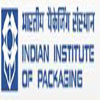-
Current valuations do not alter the India opportunity: Deepak Shahdadpuri
The only surprise in the recent markdown of Flipkart’s valuation is that it took so long coming, said Deepak Shahdadpuri, founder and managing director of investment firm DSG Consumer Partners (DSGCP), which recently said it had hit the first close of its second fund at $35 million.
The private equity (PE) and venture capital (VC) industry had been expecting a correction and insiders knew the enterprise value of e-commerce companies were nowhere near the headline numbers, Shahdadpuri said in an interview. Edited excerpts:
India is seeing a huge Series A crunch. Many start-ups that are trying to raise Series A have only been able to raise a seed plus, bridge or pre-Series A rounds. Why has the explosion in seed funding activity not expanded to post-seed funding?
This is inevitable. I have been investing regularly in India for 16 years. What we witnessed in 2013-2015 was a period where initial funding for an idea was very easy to raise from a variety of sources: seed funds, angels, family and friends, crowdsourcing platforms, etc. So, we were in an environment where three or four times the numbers of companies were getting the initial capital of $100,000-$750,000 to get going. However, when they tried to raise their next round, they hit a wall. I group them into two buckets—they try and raise a Series A which is too large because others have done so even if they do not need the capital, and they just do not have the fundamentals to become viable and profitable businesses.
I had read too many times in the Indian context that the growth in Series A funds has not matched growth in angel and seed funds; but that argument does not hold water. Investors will back businesses that they believe can make money. The more opportunities there are, the larger the pool of capital available. This is the reason we saw many hedge funds participate in the Indian Internet space in the last three years. The reason companies are not getting funds is because they do not deserve to be funded. At seed, it is all about an idea and investors often think of RoI (return on investment) as return on imagination. The seed capital is provided to develop a minimum viable product, the MVP, and to pilot it to test the product market fit. The average investment size over the 21 firms DSGCP has invested in is $750,000 and the pre-money valuation is $2-4 million. After that stage, if there is material traction, they go on to raise the Series A; otherwise, they fail because existing investors stop funding them. It takes discipline to cut your losses early. When it comes to Series A, metrics matter. In fact, they count for a lot. Now for the new investor, RoI becomes return on investment. They look at cash burn, customer acquisition costs, gross and net margins, payback periods and other KPIs (key performance indicators) that are relevant to that business at that stage.
With the softening valuation and markdowns for Flipkart, is there still a large Internet opportunity in India?
The opportunity has always been there and continues to be there. I am surprised that the markdowns took as long as they did, but insiders knew that the enterprise values of these companies were nowhere near the headline numbers. These are private deals with preference shares, liquidation preferences and other protection mechanism, which allow investors to build in a return profile despite the valuation given. The PE and VC industry has been expecting a correction or reversion to the mean and its is now happening. The valuation numbers do not in any way change the India opportunity, be it Internet or any other sector.
Most successful start-ups in India are clones of similar firms in the West. Does this mean the Indian start-up market is more about great execution than about cutting-edge technology?
Flipkart and Snapdeal may be generically classified as clones. Bringing a clone does not mean you will be successful, as many have learnt. At DSGCP, it’s always about people who can execute and are looking to solve a real problem. Clone or not, you need to make it work in the Indian context, with Indian economics and Indian challenges. From the DSGC portfolio OYO Rooms and GOQii are examples of business models that have been pioneered in India and are not clones. Even Eazydiner, which has been termed by the press as the Opentable for India, has a uniquely Indian business model that solves multiple challenges that Opentable did not face in its markets including incentivizing diners to book, leveraging call centres and having a concierge service. Successful firms in India will develop solutions for the Indian market. Execution is always going to be key. It is never easy to develop cutting-edge technology or redefine a business but it is also very difficult to execute in a market as complex as India.
How do you see the start-ups space in India in 2016? Will there be a shift to conserving cash?
The sentiment is neutral to negative. GPs (general partners) are busy looking after their portfolios. LPs (limited partners) are reassessing allocating strategy given the change in distribution profiles from their GPs. Angels and seed funds are bruised, given the larger number of companies that have found it difficult to raise the next rounds. So yes, everyone is looking to ensure that the cash they have lasts as long as possible until they raise the next round of funding. However, good companies always have an eye on the cash balance whilst looking to build a product and launch a business.
The Narendra Modi government has been talking a lot about the country’s start-up community. But how much has the government done?
It is still very early days for the current government. But credit must be given to the Modi government for working with the industry in attempting to put in place a framework and regulation that supports start-ups and the ecosystem, including the VC and PE investors. The Start-Up India initiative is a step in the right direction. The announced changes in budget and by RBI (Reserve Bank of India) that reduces tax burden on investors is a positive sign. Foreign capital accounts for more than 50% of VC and PE inflows and the government needs to send pro-business signals to ensure confidence remains intact.
Looking at India from outside, has the Modi government done enough and delivered on its promise when it comes to ease of doing business?
It has been too short a duration to judge if the Modi government has done enough… It takes a long time to put in place policies that will deliver long-term value. In the interim, there will be pain as the status quo is disrupted. I am hopeful that a decade from now we will look back and give this government some credit for refocusing India on growth, ease of doing business and building the confidence of domestic and foreign investors.
For VCs in India, can they afford to wait because hedge funds are no longer breathing down their necks?
VCs cannot build a business model solely around what hedge funds may or may not do. Cash is fungible; and for later-stage businesses that were looking for cash, and not necessarily any value-add, hedge funds and other sources of capital are attractive. Hedge fund managers found opportunities in India because there was a lack of capital at a particular point in time. They filled that gap, most notably in late-stage tech deals which were too large for traditional VC funds and when traditional PE funds were not focused or were just not able to deploy quickly. There will always be cycles; hedge funds and other pools of capital will move quickly to fill white spaces that offer attractive returns. VCs need to get used to them; VCs need to leverage these pools of capital for their benefit whilst being aware of the risks associated with it.
Considering that VCs in India have had few exits, why are we not seeing secondaries in the VC space?
There are secondaries and I think we will see more in the future. Given the vintage of the funds and the time it takes to build a business, I believe you will see more VC funds exit in secondaries whilst later-stage funds buy out earlier investors. If you are an early-stage investor, and DSGCP is a good example, you invest in and back a business that is reliant on secondary transactions for exits and, to date, the thesis is playing out well. If your question is why don’t we see secondaries-only venture capital funds, it could be because most venture-capital backed firms continue to need primary capital and the secondaries are stapled with the primary rounds.
Big picture, has the VC scene in India matured? You’ve been active in this space for last couple of years; how has it changed during this time?
I started covering India in 2000 when I joined Reuters Venture Capital and focused full time on India from 2004 when I started my first firm, Gem India Advisors. So I have been active in India for 15 years and have seen it change significantly. When I first started, there were a handful of funds and the industry was still in its infancy. All VC and PE professionals knew each other and there was a high degree of respect for each other as they worked together to develop the industry and create an ecosystem conducive for entrepreneurship and business building.
When I first started looking at India in 2000, I remember reaching out to experienced investors on the ground, including Ashish Dhawan at Chrys, Sumir Chadha who had launched Westbridge, Abhay Havaldar at Draper, Sid Das at Intel Capital, Gaurav Mathur at JP Morgan, Vikram Godse at Infinity, and others. Everyone in the ecosystem knew each other and it was a relatively small community. Everyone was happy to share his or her views and learnings. They were excited to be part of, and in building, the new ecosystem. Fast forward 16 years, and a lot has changed. There are now hundreds of funds looking at India—local, regional and global. According to Bain and Co.’s Private Equity Report 2015, there were 436 active funds in 2014 versus 233 in 2011. There are a lot more people in the industry to match the demand for managers and the amount of capital that has been raised to be deployed. In the last 10 years, $15 billion has been deployed. So, yes, the space has been very active and attracted a lot of attention. However, we are still in its adolescent stage and very far from being mature. RBI and the tax authorities have announced new rules for AIFs (alternative investment funds) and other regulations that would encourage the industry, but in typical style there is lack of clarity. However, what is clear is the focus of all parties to develop a vibrant ecosystem for all participants.
When it comes to PEs, India historically has not delivered enough returns. As China slows, will PEs come back to India big-time?
India is still a very young market for alternative investments. India is a large market and will become one of the world’s largest economies alongside China and the US. I don’t think PE was ever out of fashion. The investment business is based as much on fundamentals as it is on sentiment. According to analysts, PE deals hit a 10-year low in Q1 2016 with around 57 deals valued at $2.2 billion. I think over the next decade you will continue to see India as an attractive market for PE and VC funds. As the market grows from infancy to adolescence to adulthood, you will see differentiated strategies, more focused funds and a more diverse and healthy ecosystem. Scott Kazmir Authentic Jersey
Share This



























































































